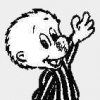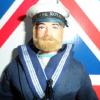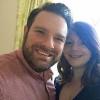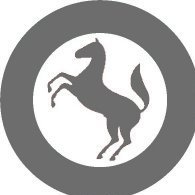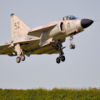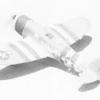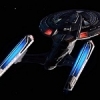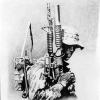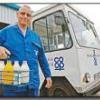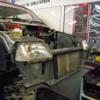Search the Community
Showing results for tags 'mustang'.
-
Hi all, Since I've finished a build in the MTO GB, I though I could start another. And this time it will be this Sprues are full of flash The kit comes with resin wheel replacements for the dreary looking ones on the sprues Also included are some PE for the interior (mostly). Though I have used some of it on another kit already... And the first problem (already?) I'm not too surprised about the broken canopy (seeing the condition of the box), though I am bummed out. I do have another Smer P-51 kit that contains an intact canopy, but I want to build two P-51's. One USAAF one, from the kit decals, and an RAF one. I'll see if I can get a replacement canopy, or see what it would looks like if I glue this one. Wish me luck. Cheers Jimmy
-
North American P-51D/K/Mk.IV Zoukei-Mura 1/32 History Whilst the earlier versions of the Mustang are well known, it is the P-51D/K with its bubble-top canopy was perhaps the most recognised and most well known version of the P-51 family. It was also the most widely used variant of the Mustang, with a grand total of 8102 machines of this type being produced. One of the problems encountered with the Merlin-powered P-51B/C was the poor view from the cockpit, particular towards the rear. The "Malcolm hood" fitted to the P-51B/C was an early attempt to correct this deficiency. However, a more lasting solution was sought. In January of 1943, Col Mark Bradley had been sent to England, and while there he saw how the newly-invented "bubble" or "teardrop" canopy had given Spitfire and Typhoon pilots unobstructed 360-degree vision. He returned to Wright Field in June, and immediately began exploring the possibility of putting bubble canopies on USAAF fighters. Republic Aviation put a bubble canopy on the P-47D Thunderbolt in record time, and Bradley flew it to Inglewood to show it to James H. Kindelberger, the President and General Manager of North American Aviation. Following discussions with the British and after examination of the clear-blown "teardrop" canopies of later Spitfires and Typhoons, North American Aviation secured an agreement with the Army to test a similar canopy on a Mustang in order to improve the pilot's view from the cockpit. A P-51B was selected to be modified as the test aircraft for the new all-round bubble canopy. The aircraft was redesignated XP-51D. The new bubble-shaped hood gave almost completely unobstructed vision around 360 degrees with virtually no distortion. The large rear section did not reach its point of maximum height until a point well aft of the pilot's head was reached, since wind tunnel testing showed that this shape was found to offer the best combination of viewing angles and minimum aerodynamic drag. The Plexiglas of the hood was mounted in rubber in a metal frame, the sill around the bottom being very deep. This was needed to provide the strength and rigidity required to avoid distortion and to prevent the binding or jamming of the canopy in the fuselage rails while it was being opened and closed. There were three rails, one along each side of the cockpit and one along the upper centreline of the rear fuselage. The canopy was manually opened and closed by a handle crank operated by the pilot. In order to accommodate the new all-round vision hood, the rear fuselage of the Mustang had to be extensively cut down. However, the amount of retooling needed to accomplish this was not extensive, and very little re-stressing of the fuselage structure was necessary. The newly-modified XP-51D took off on its first flight at Inglewood on November 17, 1943, test pilot Bob Chilton at the controls. One of the shortcomings of the P-51B was its limited firepower of only four machine guns. In addition, the guns in each wing were tilted over at quite sharp angles, requiring a sharp kink in the ammunition belt feeds and resulting in frequent gun jams. NAA took the opportunity afforded by the introduction of the new Mustang to correct this problem. The gun installation was completely redesigned, and the result was the installation of three MG53-2 0.50-inch machine guns in each wing, all of them mounted upright and all fed by ammunition belts. The inboard guns each had 400 rpg, and the others each had 270 rpg. However, Mustang users had the options of removing two of the guns and having just four, with 400 rounds each, and some pilots did actually select this option. Another visible change introduced by the P-51D was in the increase of the wing root chord. The main landing gear was strengthened in order to accommodate the additional weight, but the wheels maintained the same diameter of 27 inches. However, the wheel bays and doors were modified and the "kink" in the wing leading edge, barely seen in earlier marks, was made much more pronounced. Four P-51D-1-NA Mustangs had been completed with the original B-type canopy before the first P-51D-5-NA model (company designation NA-109) rolled off the production line. There were previously known problems with the installation of the 85-gallon tank in the rear fuselage of the P-51B and its adverse effects on the directional stability. With the P-51D these problems were exacerbated, due to the fact that the cutting down of the top line of the rear fuselage caused a lot of keel area to be lost. In order to provide for better directional stability, a dorsal fin was added ahead of the rudder during the production run of the P-51D Block 10. Some of the earlier P-51Ds (plus a few P-51Bs) were retrofitted with this dorsal fin. The extra weight and drag caused by this fin was quite small, but it helped a lot in improving the directional stability, especially when the rear fuselage fuel tank was full. The P-51D/K introduced the K-14 computing gyro gunsight, based on a British (Ferranti) design. When it first appeared, it was considered almost miraculous. The pilot needed only to dial in the wingspan of the enemy aircraft he was chasing and then feed in the target range by turning a handgrip on the throttle lever. Once the data had been selected an analogue computer worked. All that the pilot had to do then was to get the wingtips of his target lined up on the bright ring projected on the gunsight, and press the trigger. The K-14 was fitted almost from the start of P-51D production, the P-51K receiving this sight from mid-1944. This sight played a major role in the P-51D's impressive score of aerial victories. The P-51D began to arrive in Europe in quantity in March of 1944. The 55th Fighter Group was the first to get the P-51D, trading in its P-38s for the new bubble-topped fighters. The change from the torqueless twin-engined P-38 to the single-engined P-51 did cause some initial problems, and the lack of directional stability caused by the presence of a full fuselage tank took a lot of getting used to. However, once their pilots became fully adjusted to their new mounts, they found that the P-51D possessed a marked edge in both speed and manoeuvrability over all Luftwaffe piston-engined fighters at altitudes above 20,000 feet. However, Luftwaffe pilots considered the Mustang to be rather vulnerable to cannon fire, particularly the liquid-cooled Merlin engine which could be put out of action by just one hit. The Mustang was the only Allied fighter with sufficient range to accompany bombers on their "shuttle" missions in which landings were made in Russia after deep-penetration targets had been attacked from English bases. The Mustangs also participated in low-altitude strikes on Luftwaffe airfields, a rather dangerous undertaking as these fields were very heavily defended by flak. The Model This is the second P-51D Mustang released by Zoukei-Mura, but only the first this reviewer has actually got his hands on, although having several other ZM releases I am quite familiar with the Super Wing Series concept. The sturdy medium sized, yet deep, top opening box, with a lovely rendition of a British P-51K on the front, is jam packed with styrene. Each of the twelve grey and two clear sprues are individually wrapped in poly bags, with the clear sprues also having foam wrapping around the parts for extra protection. There are three large decal sheets which are supplied in another protective poly bag along with the instruction booklets. It is pretty obvious that the main instruction book is from the first P-51D release as this kit builds up in the same way, but if you are building a P-51K then you will need to refer to the supplementary booklet which is associated to the extra sprue specific to this mark. The medium grey styrene is beautifully moulded, with no sign of flash as is expected these days, but there are a lot of moulding pips, probably due to the nature of the parts design, which does mean there is a little extra cleaning up to do. The details on the parts are very well moulded with restrained panel lines, rivets fasteners on the outer skin, whilst the interior, which is what makes these kits rather special, is quite mind boggling, not just with the finesse of design but with the amount of interior parts provided. That said, there are a couple of noticeable problems, the first is that the wings have definite panel lines which I believe were actually filled to help with the laminar flow of the wing, but an easy fix. The second is the machine gun barrels, which, although quite well protected on the sprue, three or four have a pronounced warp on the review example as the barrel muzzles aren’t connected to the sprue. Of course this is easily overcome with the purchase of the metal barrel set that ZM have also released, but this shouldn’t occur with the sort of technology available these days. The instruction book is beautifully laid out, clear and easy to read, with a preface of aircraft specifications and assembly information, followed by paint colours required and the usual safety information ref tools etc. After the preface pages each major assembly has its own build section. The first page of which provides photos of the completed sub-assemblies, a written guide to what these sub-assemblies are called and in the top right hand corner of each the number of parts used in each assembly. The photos/diagrams all show the colours used to paint each part and how it should look when complete, not accounting for weathering of course. The build itself begins with the engine and what could be termed over the top in relation to the amount of detail provided that will never be seen. Each cylinder block is moulded in two halves with each of the individual cylinders moulded into one half. The completed blocks are then attached to the three piece crank case, followed by the intake manifold and cam covers. To the front of the engine the front and rear portions of the gearbox are joined, with the propeller shaft sitting between and the dual drive unit at front and the whole assembly attached to the engine block. The two piece coolant header tank is then fitted above the gearbox and the four piece ignition harness attached to the top of the engine. The two magnetos, coolant pump and cam shaft drive unit ate assembled and fitted to the rear of the engine, followed by the supercharger unit, which is made up of the two piece supercharger housing for each of the first and second stages, boost control unit, drain valve and aftercooler. The aftercooler pump and ignition harness are fitted to the port side, whilst on the starboard side the ignition harness and oil relief valves are attached. The individual exhaust stacks are then attached along with their respective fairings ensuring that the stack angles are correct. The final stage of the engine assembly is the building up of the firewall, onto which the two piece oil tank is attached, along with the oil line on the front and a couple of black boxes on the rear. The engine bearers are then fitted to each side of the engine then attached to their respective points on the firewall. Lastly the oil line is fitted between the bottom of the oil tank to the pump on the underside of the engine. The next stage concerns the assembly of the cockpit and begins with the fitting of the filler pipe and gauge to the fuselage fuel tank which is then fitted to a support base, then the fuselage floor frame along with a small rear bulkhead. There is a choice of seats, one with seatbelts moulded into it, the other without, depending on whether the modeller intends to add a pilot figure, one of which is available separately. The seat is attached to the rear armoured bulkhead via two supports, whilst the aerial relay box is attached to the rear of the headrest. The radio set and battery are attached to the support framework, to the front of which the heater and ventilation pipes are attached. This assembly is then fitted to the rear of the armoured bulkhead and assembled to the cockpit floor with the battery/radio frame sitting on the fuel tank. There is a choice of instrument panel; one with very nicely detail moulded instruments, which with careful painting should look great, the other is plane as is meant for use with the provided decal. To the underside of the panel the rudder pedal unit and switch box are attached. The side panels are then fitted to the cockpit along with the instrument panel assembly and instrument pipework to the rear of the panel. Moving onto the fuselage interior, the engine assembly is attached to the cockpit assembly. The oil cooler is assembled and fitted to the supporting frame and put to one side. The coolant radiator is then assembled out of the radiator front matrix, rear matrix and sides. The oil cooler, coolant radiator and rear radiator exhaust duct are attached to the underside of the cockpit assembly. The long coolant/oil pipes are then attached to their respective radiators and the inlet/outlet fittings on the engine. The three part carburetor air induction duct is then assembled and fitted beneath the engine attaching to the supercharger intake and the front of the engine. A small oil pipe is then fitted to the starboard side of the oil cooler assembly. It’s only now that the fuselage itself is assembled. Unlike standard kits where the fuselage is split into port and starboard halves, in this kit it is made of up of individual panels and sections. First of all the sides are added, not forgetting to fit the two oxygen bottle to the inside of the starboard side panel. These are followed by the upper fairing and the lower panel which surrounds the radiator/oil cooler duct. The engine cowling is next and the modeller is given a choice of having them fitted or not, and since there is so much detail in the engine it would seem a shame to have it covered up. There doesn’t appear to be an option to have them removable, unlike the Tamiya kit and their magnetic answer. If the cowling is to be fixed permanently closed then there is no need to add the panel supporting framework around the engine, if the engine is to be exposed then these will need to be attached. Also take note to fit the correct intake filter panel for use on the Mk.IV as specified in the supplementary instruction sheet. The separate tail cone, made up of two halves into which the tail wheel bay is assembled from the two sides, roof and forward bulkhead, is now assembled, using either the standard or supplementary parts are necessary. This also goes for the vertical tail unit as the modeller has the choice one with a filet and one without depending on the model being made. Before fitting the fin and rudder the horizontal tailplanes are assembled from upper and lower full span halves and separate elevators. This is then fitted to the top of the tail cone and the fin/rudder unit on top of that. Either of the N-9 or K-14 gunsights are then assembled and fitted to the coaming which has been attached forward of the cockpit. The windscreen is then fitted along with the completed tailcone assembly thus completing the fuselage. Moving onto the wings and once again, like the fuselage, it’s like building the real thing, albeit somewhat simplified. The single piece spar and rib unit is fitted out with the six machine guns, each with their separate ammunition belts, three per side in their gun bays. The two part main fuel tanks are then assembled and fitted inboard of the gun bays before the whole sub-assembly is attached to the single piece lower wing skin part. The three clear identification lights are then fitted to the starboard underside wing tip coloured, probably best, from the inside. The undercarriage bay front bulkhead is attached to the wing by two outer spars and a central longitudinal bulkhead. The hydraulic actuators are then attached, two per side, whilst the retractable landing light is fitted to the port bay. The upper outer wing panels are then fitted, along with the separate leading edge panels inboard of the gun bays, the port leading edge having had the camera gun fitted beforehand. The flaps can be posed either retracted or extended depending on the modellers choice of display. Before the wing can be fitted to the fuselage, the joystick and associated control linkage is attached to the top of the wing and the wing fillets fitted to the mid-lower fuselage. With these in place the wing can be attached. With the kit looking more like a model aircraft the build moves on to the addition of ancillary parts, such as the radiator duct air intake, which comes in three parts and is also fitted with an additional length of pipework before fitting to the fuselage. The oil cooler and radiator outlet doors, which are then attached to the rear of the under fuselage, the radiator door is also fitted with an actuator jack and strengthening bar. The main undercarriage units are each made up of a single piece oleo, separate brake pipe and scissor link. The wheels consist of the brake unit, inner and outer hubs and two halves of each tyre. When assembled they should look rather good, although I would prefer the tyres moulded as a single piece. The completed units are then slid into position and twisted to fit the trunnions into their correct position. The inner doors and actuators are then fitted with the required droop, depending on how long the aircraft has been shut down, whilst the outer doors are fitted to the main oleos. The tail wheel assembly is a simpler affair with the main leg being moulded in a single piece, with the single piece wheel/tyre being fitted to the axle. Once fitted into the tail wheel bay the two bay doors can be attached. Whilst the aircraft could carry a variety of stores and equipment the kit comes with just a pair of drop tanks. Each is split horizontally and when assembled are fitted with the air and fuel pipes and attached to the pylons via two crutch plates. The completed assemblies can then be fitted to their respective hardpoints just outboard of the main undercarriage legs. Final outfitting means more choice for the modeller, dependent on which version or mark they are building. ZM have included three different canopies, (M-1 Inglewood built, K-1 Inglewood built and K-13 Dallas built), each with a separate internal frame and one with an external rear view mirror. There is also an option on which propeller to use as both the cuffed Hamilton Standard and un-cuffed Aeroproducts props are provided, with their respective backplates and spinners. There is also an option to have the radar warning antenna fitted to either side of the vertical fin, so check your references to see if the aircraft you are modelling was fitted with them and open up the holes in the fin halves before gluing them together. The last thing to be fitted are the gun bay doors, either open or closed, the navigation lights, tail light, pitot probe and aerial mast. Decals There are three large decal sheets included with this kit. Each very nicely printed with very little carrier film visible, with the exception of the Southern Cross decals and Star and Bar surrounds which will be covered up anyway. They appear to be in register and nicely opaque which is particularly useful if using the identification stripes on a couple of the paint options. There are stencils for one aircraft and include some cockpit placards and instruction placards for the gun bays. If you include the original kit schemes which are included in this one then the modeller can make one of seven different aircraft. These include:- P-51D-5-NA Ser.No. 44-13837 of the 343rd FS, 55th FG Miss Marilyn II, flown by Capt. Robert Welch P-51D-10-NA, Ser.No. 44-14450, of the 363rd FS, 357th FG, Old Crow, flown by Capt “Bud” Anderson P-51D-25-NA Ser.No. 44-73108, of the 334th FS, 4th FG Red Dog XII flown by Maj. Louis Norley Mustang IVa, Ser.No. KH774, 112Sqn, Royal Air Force Mustang Iva, Ser.No. KH716, 3Sqn, Royal Australian Air Force P-51K-10-NT, Ser.No. 44-12073, of the 348th FS, Sunshine VII P-51D-5NA Ser.No. 44-13410 of the 361st FG, Lou IV There is also a small sheet of masks to aid the painting of the canopy and windscreen. Conclusion If you’ve never come across a Zoukei-Mura Super Wings Kit before then have a look. They can appear to be pretty intimidating until you look at the clever and well thought out break down of parts. I don’t purport that they will be an easy build as there is a lot to do, both in preparation, painting and fitting, but the end result is well worth it. Whilst some don’t see the point of having all the internal structure, and yes it isn’t an exact replica of the real thing, but it gives options for some well detailed dioramas as well as looking interesting if left exposed. I think this kit is one of the most accessible ZM have released as it’s not overly complex and should be ok for the intermediate modeller and above. As with everything, take your time and the results will speak for themselves. With this kit you also get to build a 1:32 Mustang in British or Australian colours which has got to be good. If you want to really go to town on the model then ZM have also released a raft full of aftermarket items from the likes of Eduard and Master Models to enhance the build, although I would have liked to have seen at least an interior etched set or seatbelts included in the standard kit. Oh! And you will need to change the machine gun barrels, particularly if you’re leaving the gun bay doors open. Extremely highly recommended Review sample courtesy of
-
Hi All, Picked this up last year at Hinckley, second hand sans original decals, But these were in the package too, So I guess I'll be doing "Old Yeller" then. I'll need to add a second seat and for true accuracy the cuffs need to come off the propellor blades but no one else would know chez Bonhoff so the second may not happen.
- 11 replies
-
- 2
-

-
The complete story of the not so quickie Hobby Boss P-51D Mustang build. I started this build because the Academy P-51A was taking longer than I had planned, The delays weren't the models fault but mine, as I spent to much time making little, pointless items more "perfect". So I decided to make a quick build of the HobbyBoss P-51D so that I could be sure that I would get something done for this Mustang Group Build. Picking an easy model and an easy (all metal) paint scheme insured that I could get it done fast, SO fast that my first photos included a clock. The clock was there because I had the hope that with a simple kit and a simple paint job I could get this kit finished in 24 hours. As it turned out I was off a bit on that estimate. With the clock ticking I jumped into the kit. Then I make my first mistake, I chose these decals. In theory, the Carpena decals for the Somali Air Force would be perfect. All done in silver paint (the Somali Mustangs started our as USAAF Mustangs in the Med., post Italy's capitulation they were transferred in a rather weary condition to the Italian AF. After a few years service in the Italian AF they were sold to Somalia. (I suspect that either Italy threw in a free coat of paint with the deal or Somalia painted them silver upon receipt, but I have no proof, I am just guessing on that one). Painted silver (including the spinner) with an Olive Drab nose panel the simple Somali markings would make decaling the model a breeze. Unless, of course, the decals shattered. With great care I got the first two roundels on but the more complex "2" shattered. So I set the model aside looking like this which was pretty advanced for the few hours invested in the build. Now the clock slows down...a lot... Turns out no other airforce makes a a "2" that looks like the Somali "2" or is the same size as the Somali "2". I spent several evenings looking, checking all the decals I have (and I do have a lot of decals) and I found nothing. Finally I admitted that I would need a replacement set of decals and off I went to EvilBay while the clock ticked on my "24 hour" build..... Graced with a little luck (or backed into a corner enough that I couldn't really afford to wait for a bargain) I got a second set and promptly coated them with gloss clear to strengthen the decal. But the Carpena Decals weren't my only decal issue, I had also decided to save painting time by using a solid olive drab decal for the nose. Great idea! Didn't work at all... Sticking in some spots and bubbling up in others I cut and then sand the nose decal off. So I painted the nose after removing the decal, BUT I had decided that leave the exhaust stacks off so they wouldn't get in the way when I masked the nose. They would, or could, have been a good decision had I not made a hamfisted whoops with the glue which spilled into the painted olive drab and dissolved part of it away. More cleaning - More Masking - More Time, and finally my "24 hours" Mustang is done...in 23 DAYS..... Greg in OK
-
ooh watching disney planes on boxing day..so cool theres a sea fury! also a mustang
-
Hi! My little 'stang! Kit manufacture: Airfix Scale: 1/72 Type: North American P-51D Mustang Extras used: Scratch seat belts from tape . Paints and colours used: AK Xtreme Metals Aluminium, AK Dark Aluminium, AK Black Base Primer, Tamiya XF-7 flat red, XF-3 flat yellow, XF-85 Rubber black, XF-62 Olive Drab, Vallejo 71.010 Interior Green, various Vallejo colours for hand painting, AK Gauzy Agent, Flory Dark Dirt. So this is another kit I've been working on for another group build/SIG on another forums. It was all about metal finishes, and as I've never really attempted a true NMF, I thought I'd give the new excellent AK Xtreme Metals a go. The kit is a fantastic mojo-buster. Fit is generally excellent, detail is good, engraved panel lines are lovely. The only problems I had were a warped landing gear strut, so the wheel had to be superglued to the undercarriage door, and the antenna was so full of flash it was unusable and had to be scratched from plasticard. I'm fairly pleased with the result of the AK Xtreme Metal and I loved the AK Gauzy agent; self levels a treat and doesn't diminish the metal finish. I did have a problem at times with the AK stuff pealing away with the masking tape despite de-tacking and leaving the paint to dry for a week at a time. However it goes on a treat and looks beautiful. Comments, tips and feedback as always greatly appreciated. And here are my two latest completions hanging out with each other! There we go! Thanks for stopping by. Have a fantastic Christmas everyone, I hope Santa fills your stockings with plenty of kits! Val
- 18 replies
-
- 40
-

-
Hi everyone! I will be building this kit for this STGB. More details about the specifics soon. Cheers Jimmy
-
Hi folk's,my entry will be Mustang IV "Dooleybird" flown by Fl.Lt Artur Dolan in 1945/46.For a brief time the aircrft was based up the road at RAF Acklington so there's my local interest and as many will remember it featured as an option on matchbox's kit back in the seventies.I plan to use Tamiya's kit and Dave(Spaddad) kindly sent my the decal's,there's a bit of info here and a reference to Arthur Dolan walking into a shop and discovering his aircraft was the subject of a model! http://www.rafmuseum.org.uk/blog/dooleybird-mustang-pilots-logbook-donation/
-
Hello guys. Another model of me. I enjoyed working this plane. Here are pictures, enjoy.
- 5 replies
-
- 14
-

-
- P-51B
- Mustang P-51
-
(and 1 more)
Tagged with:
-
Hi folk's finished after a good few months on the shelf of doom is Tamiya's well known boxing of Gentile's Shangri La.An easy hassle free build despite it being an oldish molding now it still towers above many newer kits for quality with only a bit of cursing around the larger decal's,I dark washed the underside but used a brownish wash for the upper panels(thank's Wolwe),graphite graphite powder for the gun and exhaust staining.Hope you like and thanks for taking the time to look.
-
Hi folks,last week while binning some old boxes and a couple of kits beyond saving I actually had this hovering over the bin with the airframe primed minus all the rest of the pieces.I bought it last year for pennies just for the scheme but lost interest as I hated the canopy.So I thought have a laugh and using the Maskol technique I have done on a couple of kits see what I could do to represent the effects of the Hot African sun if it did,nt work nothing lost just a couple of hours and a pot of paint.So here,s the finished kit which I am glad I saved, the canopy was nowhere as bad as I thought although the kit is apparently full of errors not sure with having the loop antenna it should have the wire as well but either are easily removed if wrong.I am now trying this method on a Korean war Corsair.Thanks for your time.
-
Apart from the Eduard PE seat belts, this was built OOB. This was a build of "firsts" for me: first WWII plane, first propeller plane and first build completed in overall silver. It was painted with Polished Aluminium from AK Interactive's new Xtreme Metal range. It went down rather smoothly and had a great shine over a coat of gloss black. However, it did not adhere well to the kit's surface and several parts rubbed off. After spraying the appropriate areas back with the paint, I sealed the whole model with Mr Color gloss clear. This helped protect the paint thoroughly at the expense of the coating losing a bit of the metallic sheen. I elected to keep weathering to a minimum. What little you see was done with oils and pigments. Hope you enjoy the photos! Mark
- 16 replies
-
- 33
-

-
Well, two of them as one's already been started for the MTO group build that's currently going on. The two that will be done for this GB are KP's Mk.III with Malcolm hood and the Mk.IVa from Airfix with the appropriate update set from Freightdog to allow the RAF decals in the pack to be used. Pics to follow when I dig the kits out!
-
Hi all, Thought I should drop a little post here for the benefit of those who model in 1/43 or are Lambo or Mustang fans... I was in Morrisons this morning with SWMBO doing the weekly shop and as i walked down the toys isle these two caught my eye: OK I thought, are they worth a dabble? there was a risk that they were a bit basic and crude, no interiors etc, lets face it they were in the cheap toy section of a supermarket! The boxes were well sealed (tape on all four edges) so no chance of having a sneaky peek. However as they were the vast amount of £3.00 each, yes you read that right £3.00 each! I thought what is there to loose so I took a gamble and slipped one of each into the trolley. Were they worth the three quid? Simple answer is; indeed they were Here are a couple of quick 'what's in the box' pics i managed to take of the mustang before lunch... And a close up of the chassis/interior sprue... And the bodyshell... There's also instructions and decals for the stripes, and two metal axles. The mouldings appear to be 'multi finish' e.g. on the interior the floor has a matt texture whereas the molded in rear seats have a glossy texture. The holes in the underside appear to be a bit strange (the two outermost ones are for the screws holding the body on), however I can live with them as it's a part of the car you don't normally see. The Lambo is on a par with this one, the engine top has a gloss finish, with a subtle carbon fibre effect for the rocker covers (all on one molded piece smaller than a postage stamp). These are the only two they had, but it might be worth keeping an eye out for others. I have since done some research and it appears that they were originally molded by Doyusha, and I've seen what appear to be the same kits with slight differences to the boxes for sale on the web for around £7.00 a pop. Verdict... For three quid each they were a bargain Al
-
Howdy folks, For some reason Mustangs used during the Korean War were designated F-51's not P-51's. I don't know why but here's my version. First time using Alclad. This one is polished aluminium. Here's the pics Thanks for looking Cheers Bruce
- 20 replies
-
- 12
-

-
I managed to finish my Tamiya RAF Mustang III over the weekend. I used an Eduard photoetch set for the P-51B, Montex masks (which I found hard to remove and which left quite a lot of residue), and aftermarket Aeromaster decals which were far nicer than the overly thick Tamiya ones. I also used a set of resin Brassin wheels.
- 24 replies
-
- 19
-

-
Time to post my new project. I have build this kit a few years ago but I since it was one of my first models I did make a few mistakes while building it. The bumper broke off a few times, paint snapped off, glue on the clearcoat... The main reason why I always fixed it up was because I painted the stripes myself. Here it is newly build: The new kit: unboxing: https://www.facebook.com/mgscalemodels/photos/?tab=album&album_id=1174778152583795 All the body parts: Painted these Zero Paints Jet Black And this is now the 7th Mustang I build I pretty much know this kit inside out. And I also mannaged to paint the primer, first and second colours in 1 airbrush session. Also knowing this kit the assembly went really fast. I did have some problems with the body. Had to sand away the bad spots and give it a new coat of Jet Black. First I just used Gloss black, but that paint was to thick. Had to throw it out... Didn't take any picture's of how bad it was, but it was just like my GT500... But now it's ready for the gold decals. Going to use the decals this time. Hope to have the decals and clear on tomorrow, but first I need to clean out my spray booth. Thanks for watching! Mike
-
Hi folks,My entry is the Easy-kit boxing of the Mustang III,I have the extra decal sheet with markings for a PR version in blue with ID stripes on the fuselage.The kit should arrive mid week.Although a bit toy like most of the range builds up into a decent enough replica of the respective type and actual construction ready for paint can take only minutes,at £3;99 I'm not going to complain about the kit's shortfall's certainly not the best but equally not the worst. I am restricted to maybe two hours on Saturday and Sunday and a little time Monday morning due to work but hope to finish I,ll use my mobiles clock in any photo's. A review of said kit. http://www.internetmodeler.com/2008/march/first-looks/hobbyboss_p51c.php
-
I know Airfix do a F-51D in Korean markings but I bought this starter set for £4 with free postage from Argos months ago and I'm going to use it instead of buying a new kit I was researching F-51's and came across a few photos of Mustangs in SAAF markings, I really like the Springbok roundels so that's what I'm doing. I'm using a set of MAV decals which give me a ridiculous choice of aircraft to model! I've yet to choose... This is only the second "new tool" Airfix kit I've built and I'm hoping it will be as good as the A-4B I built last year. What a pity... A really good kit let down by out of register decals Good job they're not needed. Because they're being replaced with these.
-
Hi all I thought I'd finish KP's new Mustang in Don Gentile's markings. I'm confused which enamel to use. Contenders seem to be: Humbrol: 70 Brick Red Matt, 186 Brown Matt Revell: 32180 Mud Brown Gloss, 32137 Reddish Brown Flat. The underneath seems less of a problem. Revell 32143 Flat Grey USAF! I'd be very interested to learn of your recommendations. Cheers M.M.
-
I bought this set for three quid at home bargains and decided to start work on it so next post I will have the interior,prop,rockets,bombs and fuel tanks. I hope you will decide to follow this topic and comment because I would really appreciate the support on my first model i'm posting on britmoddeler.
- 16 replies
-
- 3
-

-
- mustang
- North American
-
(and 2 more)
Tagged with:
-
Well I decided to dig this out to use as a stress reliever build to go alongside my Days of Thunder build and well, just look what happened in 3hrs Ok so it was a stalled build from last year lol. Better explanation to come in a WIP I'm going to start about a Capri with a Turbo Eye's peeled everyone lol. TTFN Ashley
-
After 8 flight in ETO Charles Yeager got shot down in this aircraft.. he survived, escaped, flew again and the rest is history..
- 14 replies
-
- 27
-

-
Hi folks, a little Mustang picked up for a couple of quid from Aldi ages ago and as I had the decals and spare's from the F-51 in a box as a bit of a break from 1/48 I decided to do a Dominican operated machine which according to the instruction's was still on charge in 1984.I dropped the wing and tail flaps by gently scoring the panel lines remembering to alternate the wing aileron's,as I said a week long fun build in a scheme I didn't really like until I applied it I think the Mustang suits a more modern camoflage scheme,thanks for looking in and apologies for the poor light sadly we seem to be having a second winter up here!
-
Kit 1 - 1/72 Hasegawa P-51D Mustang - A12 Kit 2 - 1/72 Airfix P-51D Mustang - A50095 Okay so you're probably wondering why I would "waste" time on these obsolete old tool Mustangs, when there are superb ones available for cheap (Airfix new tool). Well firstly I had them in the stash. Secondly, I wanted to experiment with NMF paint, and with experiment, I mean more than a few brush strokes on a scrap piece of plastic. And for that I needed two of my less valuable kits. So what paints did I use? Kit 1 - Humbrol Metalcote 27002 brushed on Kit 2 - Humbrol Acrylic 11 brushed over a black base The rest of the paint was all Humbrol acrylics. I also varied the fuselage panel colors on kit 2 by adding some drops of black and blue. And what was the results? Well, I won't do either option again in the future. Not that it was a failure, but I get much better results with Tamiya AS-12 spray, and Humbrol Acrylic 11 brushed over grey primer. The Metalcote is a nice color, but has a bit of a graininess in the finish. The Humbrol 11 is a very nice color, but over a black base the color changes slightly, and it was impossible not to leave brush marks. It works way better over grey matt primer. I am satisfied with my experiment's results, and glad I had done it (and didn't waste a new kit on it!). Whilst this isn't my best work by far, these two Mustangs will be welcome on my shelf. Here they are. I used the new tool Airfix kit's decals (of which I had two spare sets) on Kit 1, and the Hasegawa's decals on the Airfix old tool Kit 2 (weird to swop I know). I painted the nose checkers on kit 2 by hand, as well as all stripes on kit 1. You may also notice that I filled the necessary panel lines on kit 2, and sanded of the necessary raised panel lines on kit 1. And my Mustang collection seems to be growing. Cheers Jimmy



